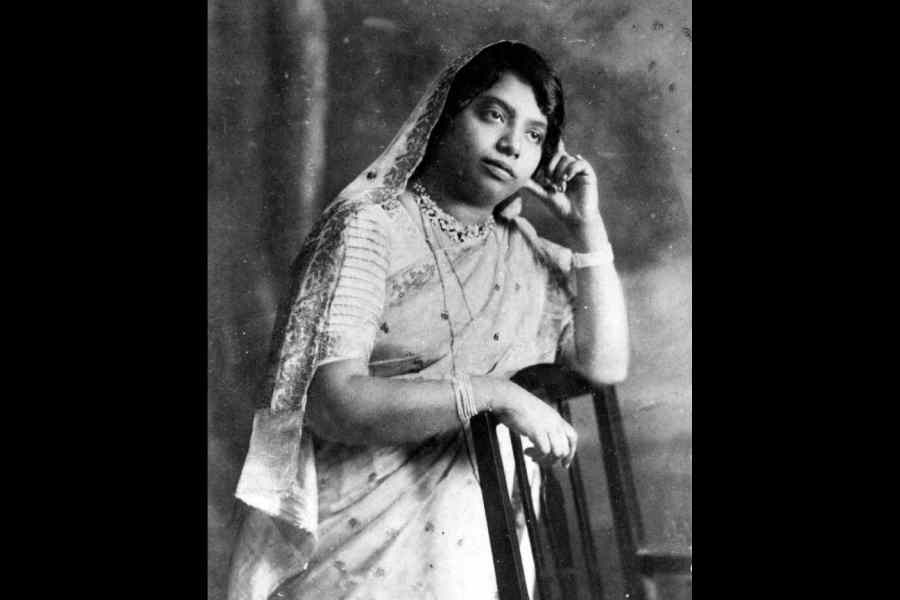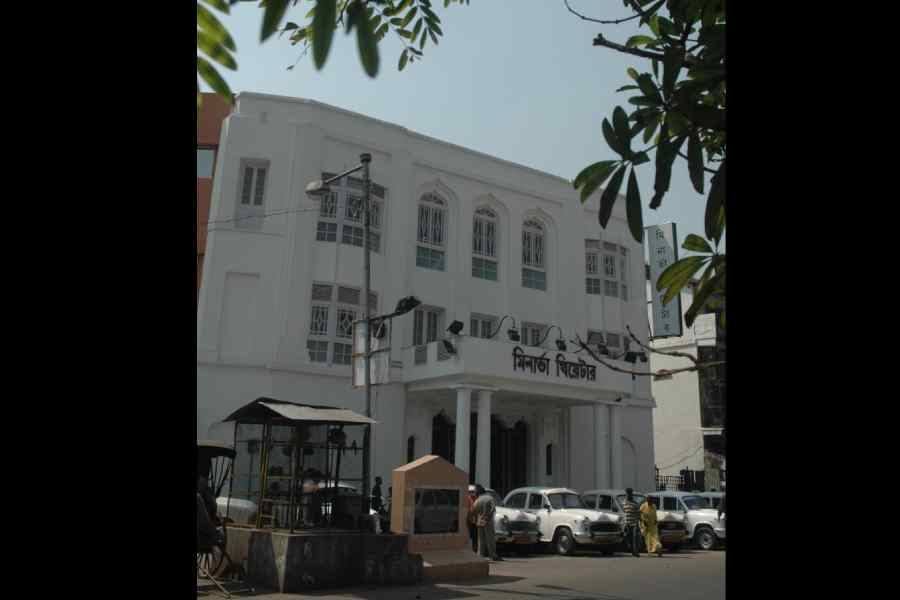With Star Theatre, Minerva Theatre is the oldest stage in the city that survives from the first days of modern Bengali theatre. Star is primarily a film theatre now, staging plays occasionally. Minerva remains a stage, though an audience often remains elusive.
Both Star and Minerva, two leading theatres, have had chequered careers. Sustaining a stage is not easy, just as living an actor’s life is not. Much has been said about Star, its glory and its decline, and not only because of its association with Girish Chandra Ghosh and Nati Binodini, two of the most celebrated names of Bengali theatre. But Minerva was no less a witness than Star of Bengali theatre’s moments of glory, precarious as they were, yet such a triumph.
For a start, Thursday (August 8) marks the beginning of the centennial year of the remarkable revival of the theatre, with the help of an actress, from one of its worst tragedies. On October 18, 1922, a huge fire destroyed the theatre. But Minerva rose from its ashes, with the help of eminent singer-actress Angurbala.
“Angurbala helped to re-establish Minerva by raising funds,” says theatre scholar and singer Devajit Bandyopadhyay.
Very few actresses could play such a role off-stage, says Bandyopdhyay.
Earlier, Star had been founded with Binodini as its inspiration. The theatre was to be named after her, but was not, because it was felt that a theatre named after a woman who was not “respectable” would drive away the “bhadralok”.
Minerva had started its journey with Girish Chandra’s Macbeth, on January 28, 1893, in Beadon Street, where the Grand National Theatre once stood. Minerva was established a decade after Star had been built in Beadon Street, though it would be rebuilt in Bidhan Sarani later.

Angurbala Sourced by The Telegraph
After the death of Girish Chandra in 1912 — he had performed his last play, Balidan, there — Minerva began to decline steadily. Then in October 1922, the fire destroyed it.
Angurbala had just come back from a tour of north India with Alfred Theatre. In her 20s, she was already a star. She was much in demand in theatre companies for her voice. Trained in classical music, she had recorded songs for the Gramophone Company.
Her immense talent as a singer had been obvious from the time she was a small child. Her original name was Prabhabati Bandyopadhyay, but she had been renamed “Angurbala” by a family friend who had wanted to introduce her to Star Theatre.
He had felt that this name would do justice to a girl with a voice as sweet as grapes. “I am carrying all the pride and all the pain of that name till my old age,” Angurbala writes in her memoirs Mone Pore, which were published in Desh Binodan in the Bengali year 1377 (1970) and have recently been republished by Sutradhar.
After the fire, Upendranath Mitra and Manmathanath Pal on behalf of Minerva requested her to play the lead role in the play, Varuna, by Khirodeprasad. The play was being performed at various theatres and a touring theatre company had also been formed to perform it to raise money for the new theatre. Angurbala agreed to act in the play.
The performances raised enough money for the theatre to be rebuilt. The new theatre was inaugurated on August 8, 1925, with the play Atmadarshan by Mahatapchandra Ghosh. Angurbala played the role of Vivek in it — Vivek meaning conscience, which is a stock character on the Bengali stage.
On that day, a large crowd came to see the new theatre and the new play. At first, Angurbala was dressed up as the goddess Jagaddhatri and presented on the stage. Then the play began.
“Atmadarshan was gorgeously produced, with colourful scenes, costumes, light, songs and dances in a new style…(It) held the Minerva Stage for quite a long time…It also brought financial stability to Minerva,” writes scholar Sushil Kumar Mukhopadhyay. ”Splendidly mounted, Atmadarshan left a mark on the Bengali stage of the twenties. Angurbala sang wonderfully as Vivek.”
The singing star went on to play lead roles at Minerva in Nartaki, Byapika Biday and Satyer Sandhane. “In Satyer Sandhane she sang with Krishnachandra Dey,” reminds Prasanta Dawn in his preface to Angurbala’s memoirs.
“At Minerva began another chapter of my life. That is a long history. So many events of my life, the sad, the joyful, have happened there. They can surpass a play or a novel,” writes Angurbala in Mone Pore.
The revived theatre also hosted Angurbala’s contemporary, the redoubtable singer-actress Indubala. Their names are often pronounced together.
Indubala, a resident of Rambagan in north Calcutta — Angurbala lived in Darjipara, not very far from Rambagan — was a public-spirited personality. She had wanted to set up a hospital for women who worked in theatres. Most of them were from the red light area. Indubala organised events in Minerva where she sang to raise money for the hospital, but her efforts were unsuccessful.
Minerva was home to Utpal Dutt’s brilliant plays in the 1950s and 1960s, from Angar to Kallol, which were as spectacular as fearless and provocative, taking to task the powers that be.
The political was not new on the Minerva stage. The political can never be far away from the stage. The Bengali Macbeth was a landmark. Among other things, the play featured Ardhendu Sekhar Mustafi, another renowned Bengali theatre personality, who played five roles in it, including that of the first witch.
When Girish Chandra had left Minerva for some time, other stalwarts, such as Ardhendu Sekhar and Amarendranath Datta, had taken charge.
Sekhar had once held a public meeting at Minerva to discuss the importance of writing the history of Bengali theatre.
During the Swadeshi movement years, Girish Chandra staged at Minerva several of his plays, such as Siraj-ud-Daula and Mir Kashim, that carried a strong nationalist message.
With Star and Classic, Minerva also screened the first motion pictures in Bengal made by Hiralal Sen. A fire, again, destroyed all his films in 1917.
Fire has always been a hazard for the theatre. In Calcutta Lebedev’s theatre, the first modern theatre in the city, was gutted; so was Chowringhee Theatre. The popular actress, Esther Leach, died from injuries suffered during a fire at Sans Souci theatre.
Star, too, would be destroyed in a fire much later. It would be built again, though not restored to its former glory. Minerva would be repaired, too, during the last term of the Left Front government, in an attempt to rescue it from the ravages of time. But it has not got the crowds back.











